From the flowers carried as a lucky charm to the flowers that became a tourist destination in Arizona, many flowers have a fascinating history. Here are some flower legends that follow some of our most beloved blooms.
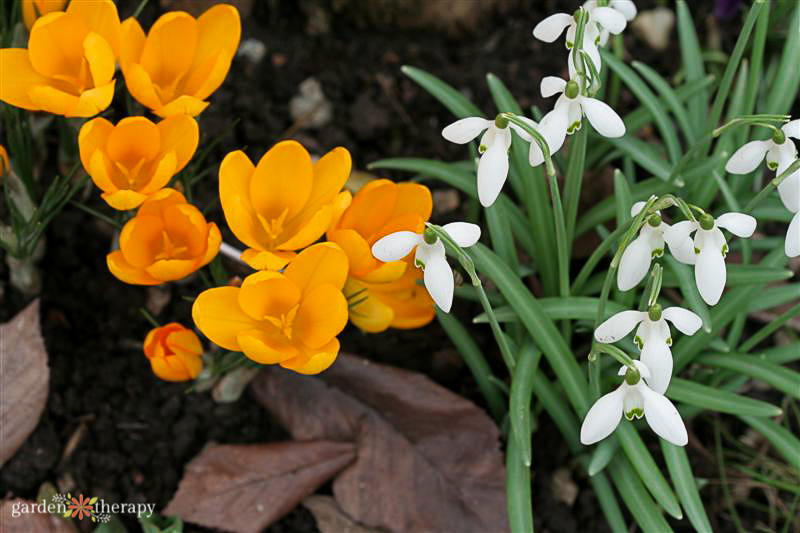
When I’m learning how to identify different flowers and their names, I find it always helps if I know the history behind the flowers. Even just one cool fact makes the name stick!
Over time, I’ve heard many legends about flowers, and some are just so fascinating. Whether it’s where it got its name, how it was used, or what it represented, many flower legends come from all corners of the world.
I read A Short History of Flowers: The Stories That Make Our Gardens by Advolly Richmond and absolutely loved the different stories she told about many common flowers you might find in your garden. I wanted to feature some amazing flower legends with the help of Advolly!
Here are the flower legends we’ll be exploring…
- California Poppy
- Daylily
- English Lavender
- Lilac
- Lily of the Valley
- Love-in-a-Mist
- Snapdragon
- Snowdrops
- Sweet Pea
- Zinnia
- More Fun Gardening Folklore

Excerpted with permission from A Short History of Flowers (Frances Lincoln, an imprint of The Quarto Group, 2023) by Advolly Richmond. A Short History of Flowers publishes March 7, 2024, and can be purchased wherever fine books are sold. Learn more at quarto.com.
California Poppy
Eschscholzia californica
The California poppy is native to the western United States, and as you can guess, is one of the main wildflowers spotted in California. It became California’s state flower in 1903.
“The plant’s fiery, orange-coloured flowers earned the name ‘copa del ora’, which means ‘cups of gold,’ drawing on the legend that the orange gold petals of the Eschscholzia californica filled the soil with the same precious metal,” says Advolly. “No one could have anticipated just how prophetic this would be when the California Gold Rush came in the 1850s.”
The First Nations peoples of California valued the plant for its medicinal purposes, using it to reduce headaches, as a natural antidepressant, as a sleep aid, to reduce stress, and more.
In most recent history, Meghan Markle as Duchess of Sussex included the California poppy in her new coat of arms after marrying Prince Harry, honouring her heritage and birthplace.
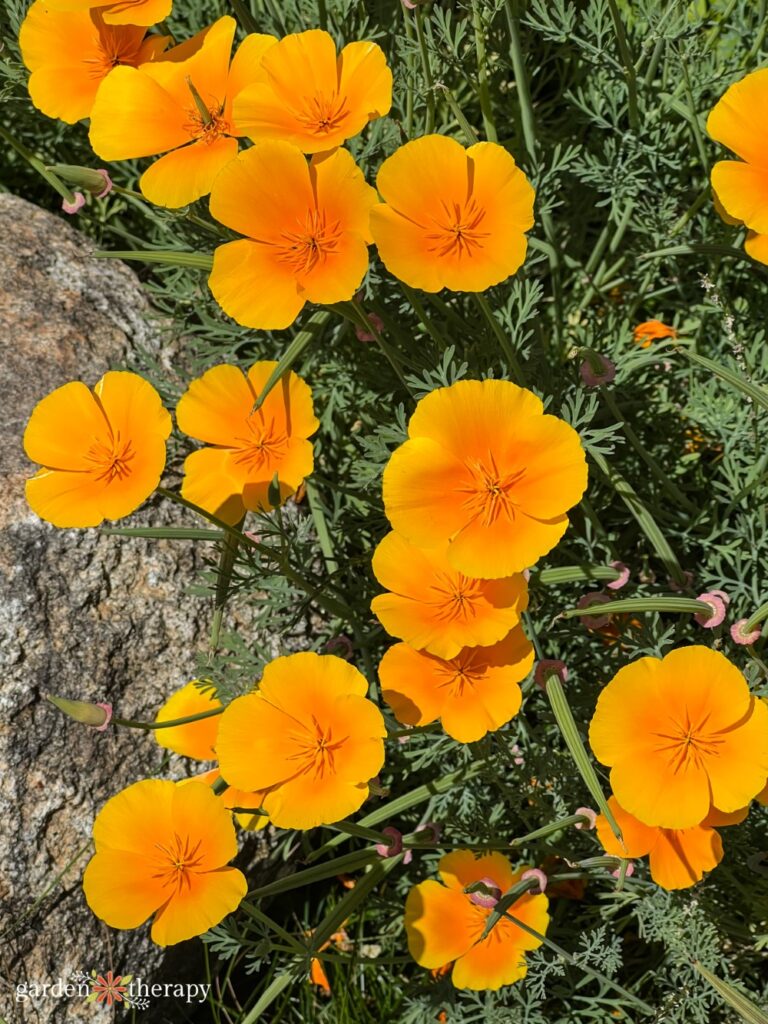
Daylily
Hemerocallis spp.
When I’m walking through the streets of Vancouver, you can’t go a few houses without seeing the brilliant blooms of daylilies in the summer.
“Daylilies were known to the early Roman, Greek, and Egyptian doctors from plants brought from China along the silk routes about 2,000 years ago. Northern Europe only learned of them in the sixteenth centre, with Hemerocallis fulva introduced in 1576,” says Advolly.
Where daylilies originated, no one is quite sure. The theory is that the plant began as a chance seedling that then became cultivated. In China, the flower legend was that eating the blooms could alleviate sorrow.
I myself love daylilies as an edible ornamental. The root tubers can be cooked like you would a potato and the flowers can be eaten in a salad or to garnish a dessert.

English Lavender
Lavandula angustifolia
There are few people who don’t love the calming scent of lavender. As a known medicinal herb and aromatherapy staple, lavender is used to scent many home and beauty products and as a decorative element itself when dried.
Lavender has been a European garden staple since the medieval period, used to clean laundry and as an insect repellent.
“When Queen Victoria declared her love of lavender, it incited a cult-like reaction which drove the fashion for all-things lavender, leading to the rapid growth of the English lavender industry,” says Advolly.
To this day, I think the lavender craze still remains strong. The plant is a foundation for many of my own recipes, including lavender linen water and lavender bath salts.
Find all my lavender projects in this post.
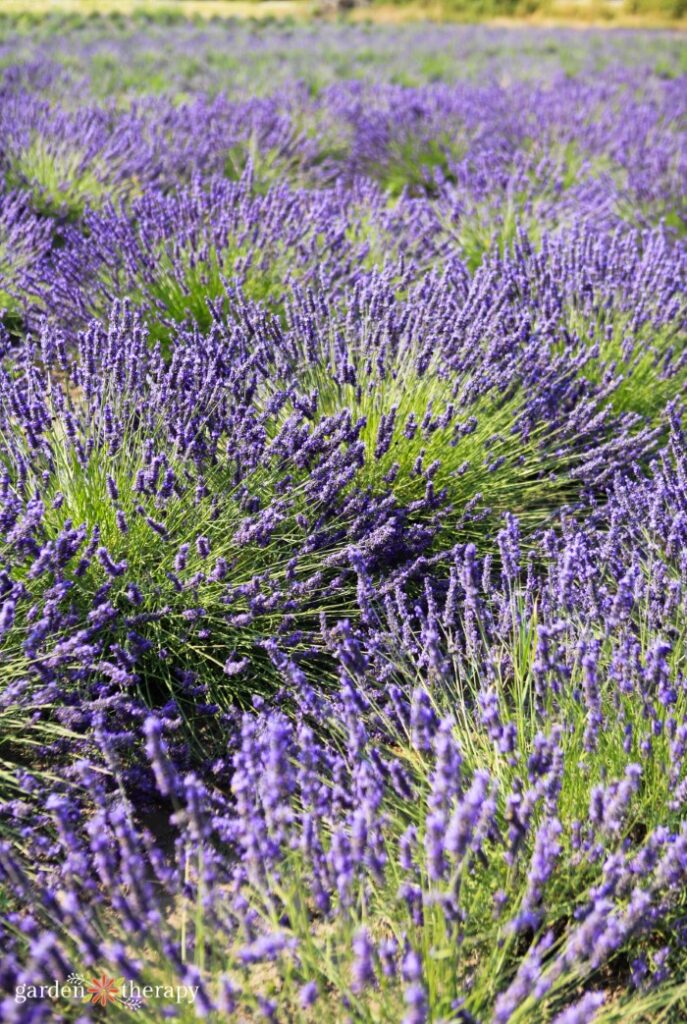
Lilac
Syringa vulgaris
Speaking of beautiful scents, we can’t forget the lilac. While traditionally a spring bloom, the rising popularity of lilacs led to the French forcing blooms.
“The art of forcing lilac blooms commercially, especially for the white version, had been practised in France as early as 1774 in caves and cellars,” says Advolly. “Because, remarkably, no matter the natural shade of the flower, when non-white lilacs are forced in the dark, they produce white flowers.”
Today, we can grow white lilacs, but the common purple lilac remains the most popular. They live for decades, often outliving the gardeners who planted them. I inherited my own lilac tree when I bought my first home, and I happily brought cuttings indoors to perfume the whole house.

Lily of the Valley
Convallaria majalis
Longly beloved, the lily of the valley was one of the first flowers to be grown in cultivated gardens. It’s highly beloved in France, where it has its own festival on May 1, ever since King Charles IX became enamoured with the spring bloom.
On this day, families will wake up early and head into the woods to forage for the flowers and bring them to friends and family to symbolize good fortune.
But the king isn’t the only famous Frenchman to be captivated by the lily of the valley.
“Christian Dior often wore the flower in his buttonhole just as his models sported outlandish boutonnieres on the catwalk,” says Advolly. “In order to ensure that he had a constant supply of the flower, Dior’s personal florist, Madame Paule Dedeban, grew it all year round in a heated glasshouse so that the designer was never without his spring bloom.”
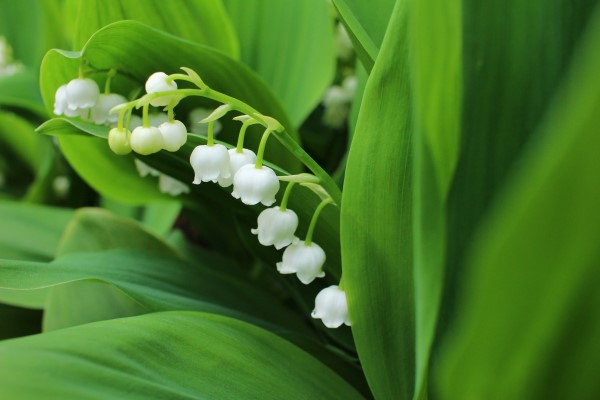
Love-in-a-Mist
Nigella damascena
A signature cottage-style flower, the love-in-a-mist has jewel-like flowers that sit atop feathery, fennel-like leaves. Once the flower is gone, a pretty seed pod takes its place, making it a highly decorative flower.
It was a common garden flower in Europe by the 16th century, even once considered too common and not worth growing by some. But one of the most popular varieties, ‘Miss Jekyll’, was bred by Miss Gertrude Jekyll in the 1800s in her own cottage garden after years of careful selection.
While you might expect the flower to represent love, its name actually comes from the appearance of the flowers floating atop fine foliage.
“Unrequited love and longing also found meaning in the unusual flower – giving someone a bouquet of N. damascena meant ‘you puzzle me’ but it could also indicate doubt, uncertainty, and even embarrassment,” says Advolly.
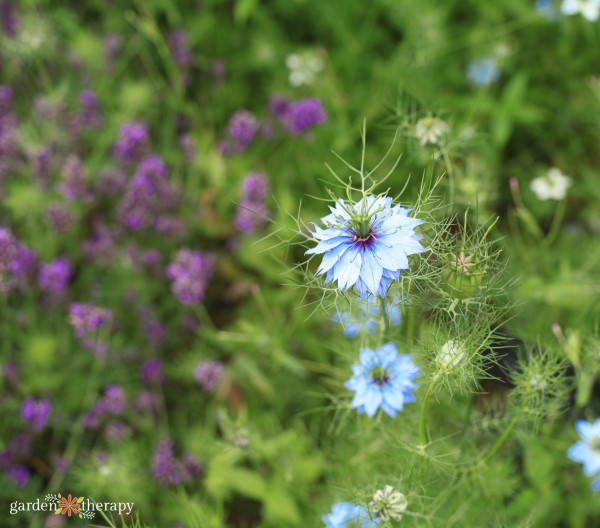
Snapdragon
Antirrhinum majus
Snapdragons are such a unique flower, and I’m sure I’m not alone in squeezing the flower to make the ‘dragon’s jaws’ open and close. The ‘flames’ of colour and a stamen tongue might even poke out.
And if you’ve ever let your snapdragons go to seed, you’ll see that their dried pods resemble tiny skulls. Because of this, snapdragons were thought to offer protection from witchcraft and even again.
Their appearance alone could bring all kinds of flower legends. “At the height of the Renaissance, new powers were bestowed upon the humble snapdragon,” says Advolly. “If you ever found yourself short on charm, it was believed wearing the flower about your person could miraculously enhance your social standing, as the flowers were said to give you charisma.”
Well, who can say no to a little charisma!?
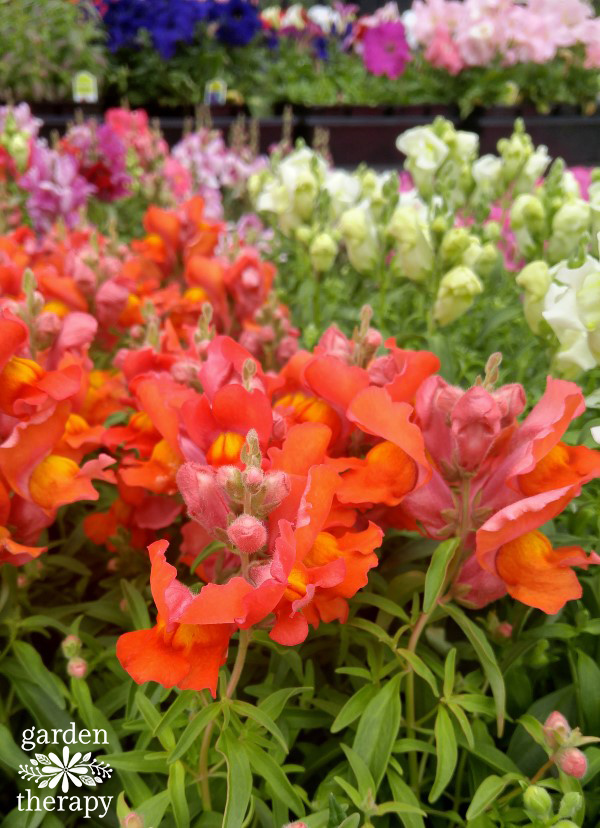
Snowdrops
Galanthus nivalis
Before the tulips spring, you can find snowdrops. They truly are one of the first hallmarks of spring, albeit a subtle flower that might get missed upon a first look. Snowdrops will naturalize and form a colony, so they can linger for many years after originally being planted.
“Colonies of snowdrops are often found naturalised in many parts of the country at this time of year and, in most cases, in the vicinity of the ruins of ancient monasteries, churchyards, and other religious establishments, relics of past pious spring traditions,” says Advolly.
Snowdrops are used during the Christian festival Candlemas, where candles (and snowdrops for their resemblance to a candle’s flame) celebrate Mary’s purification in the Temple of Jerusalem.
The flower has also been linked to death due to its appearance and being found commonly in graveyards. Their white petals resemble a corpse’s shroud and the drooping heads like sombre mourners.
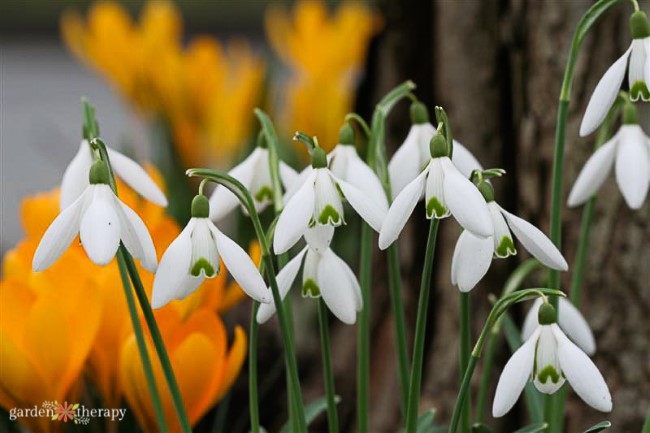
Sweet Pea
Lathyrus odoratus
Sweet peas are another cottage garden favourite, where the multi-coloured butterfly flowers climb atop fences and trellises. And, of course, cut and brought inside, where their smell fills the room.
In the 1800s, the popularity for the flower rose in Europe and by the late 1800s, desire for the flower had spread to America too.
Davis describes one family, the Nakagawa family, as well as a group of other Japanese-American families who sought to establish new farms in Arizona after they were incarcerated during WWII. The Nakagawa’s flower farm grew many flowers, including sweet peas.
“In early summer, visitors travelled across states to buy bouquets from the flower stands or just to drive past the field,” says Advolly. “The scent was said to carry for miles, and drivers would roll down their windows to make the most of the beautiful scent as they drove by mile after mile.”
The flower farms belonging to these Japanese families were a highly sought-after destination. The farms no longer exist today, the land being sold to developers over time. But how I wish I could have paid a visit!
Zinnia
Zinnia elegans
In comparison to other flowers on this list, it took a while for zinnias to rise to the ranks of a must-have garden flower. By the Victorian age, they were all the rage, and the breeding and cultivation of the plant took off.
Clementine Hunter was a folk artist who found plenty of inspiration in zinnias. Born on a cotton plantation in Louisiana, Hunter picked cotton before becoming a domestic servant at Melrose Plantation, a liberal retreat for artists.
“In 1939, at the age of fifty-two, while cleaning a recently vacated guest room, she came across discarded tubes of paints and brushes left by a visiting artist,” says Advolly. “Hunter, who never learnt to read or write, began to paint. One of her first paintings in that year was on a piece of curated cardboard and titled Bown of Zinnias, a favourite subject that she constantly returned to over the years.”
Little did she know that one of her zinnia paintings would go on to be displayed at the Louvre. And like Clementine, many of us continue to be infatuated with the zinnia flower.
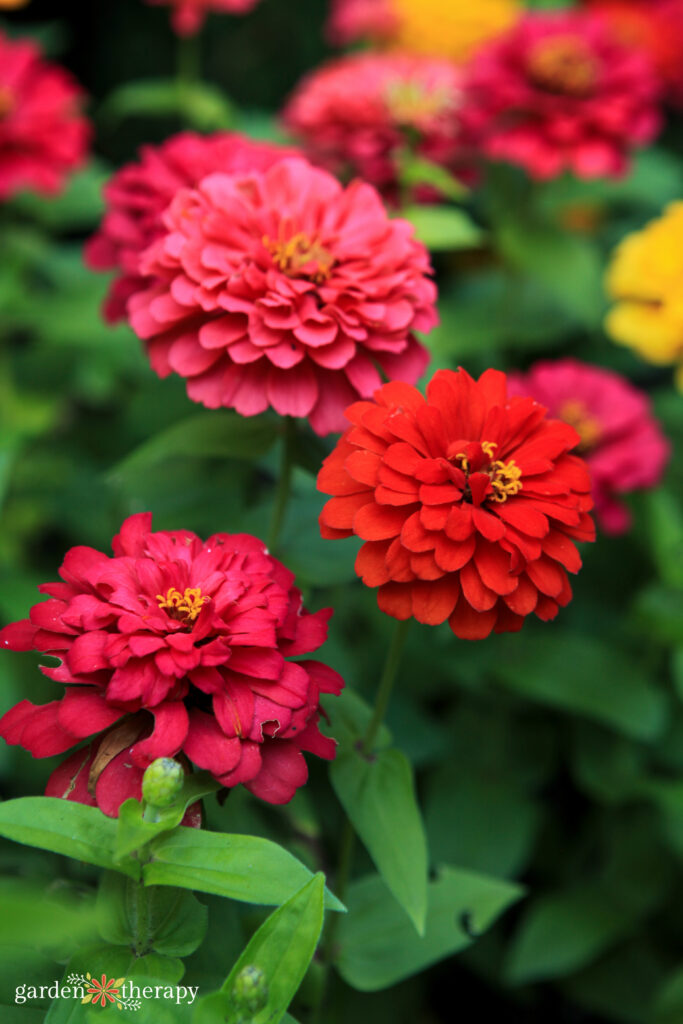
And those are just a handful of some flower legends and amazing histories. For more, be sure to check out Advolly’s book A Short History of Flowers. If you know an interesting story behind a flower, leave it in the comments below.
More Fun Gardening Folklore
- Growing Pains: Dispelling Old Wive’s Tales About Gardening
- Common Garden Superstitions and Their Origins
- Mothers of Nature: Women Who Shaped Today’s Gardens
- Crazy Plant Ladies Through the Ages: Women Naturalists, Botanists, and Horticulturists Who Made History
- Fascinating Herbal Histories From Around the World

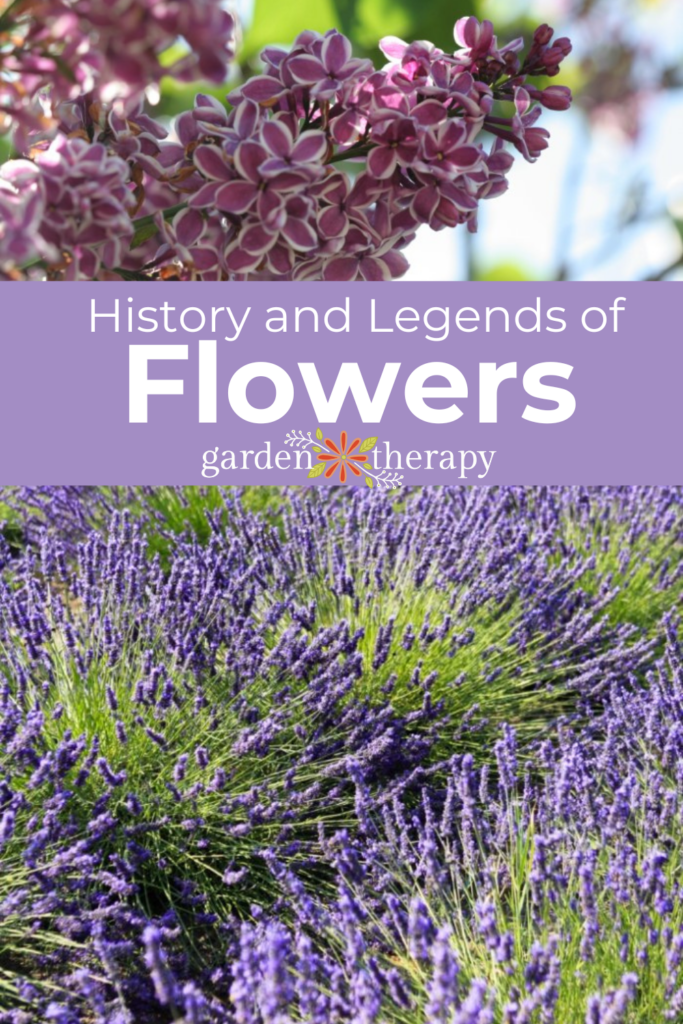



your site is very exciting, including colorful pictures.